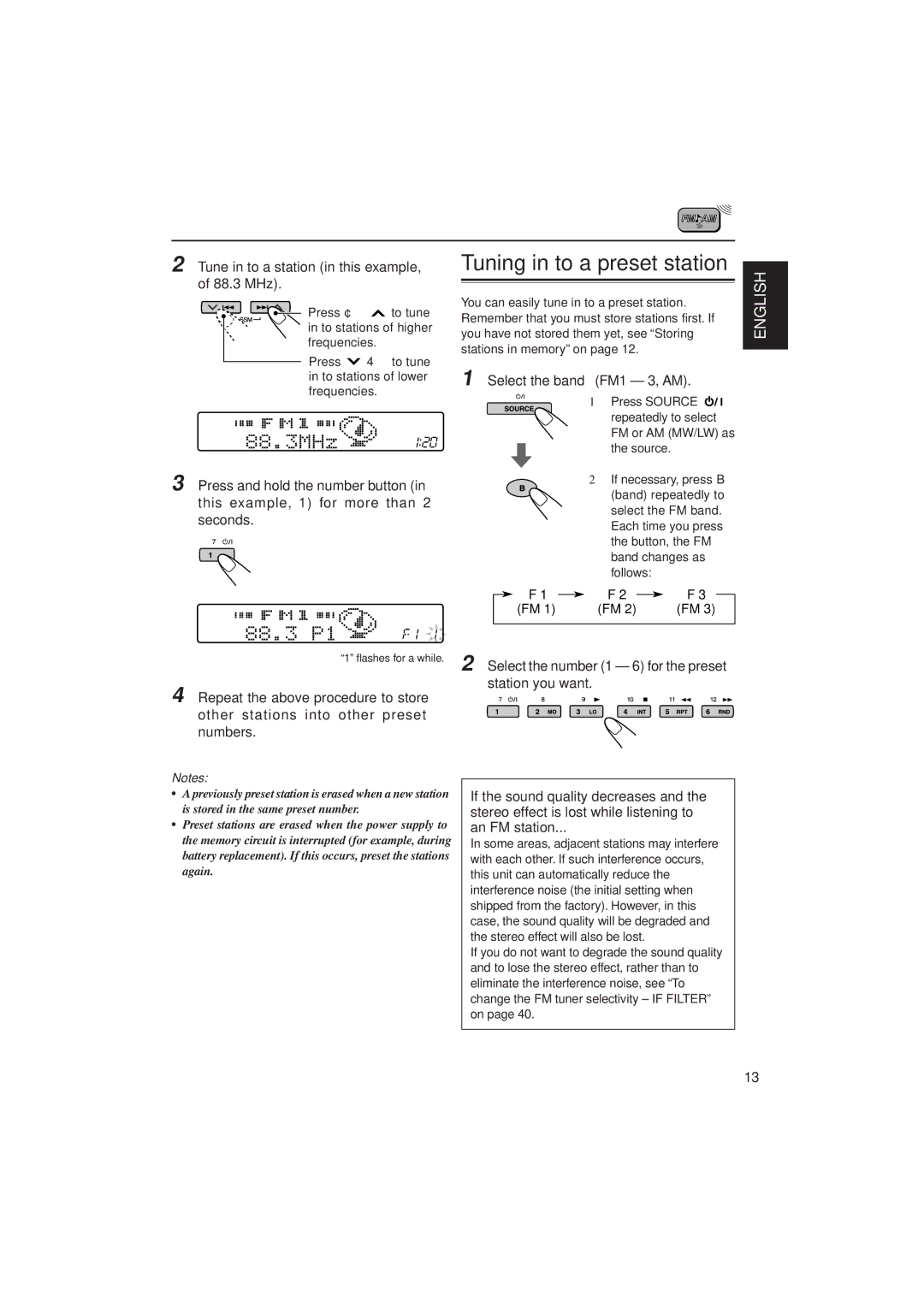
2 Tune in to a station (in this example, of 88.3 MHz).
Press ¢ ![]() to tune in to stations of higher frequencies.
to tune in to stations of higher frequencies.
Press ![]() 4 to tune in to stations of lower frequencies.
4 to tune in to stations of lower frequencies.
3 Press and hold the number button (in this example, 1) for more than 2 seconds.
Tuning in to a preset station
You can easily tune in to a preset station. Remember that you must store stations first. If you have not stored them yet, see “Storing stations in memory” on page 12.
1 Select the band (FM1 – 3, AM).
1Press SOURCE
repeatedly to select FM or AM (MW/LW) as the source.
2If necessary, press B
(band) repeatedly to select the FM band. Each time you press the button, the FM band changes as follows:
ENGLISH
“1” flashes for a while.
4 Repeat the above procedure to store other stations into other preset numbers.
| F 1 |
| F 2 |
| F 3 |
|
|
|
|
| |||
| (FM 1) |
| (FM 2) |
| (FM 3) | |
|
|
|
|
|
|
|
2 Select the number (1 – 6) for the preset station you want.
Notes:
•A previously preset station is erased when a new station is stored in the same preset number.
•Preset stations are erased when the power supply to the memory circuit is interrupted (for example, during battery replacement). If this occurs, preset the stations again.
If the sound quality decreases and the stereo effect is lost while listening to an FM station...
In some areas, adjacent stations may interfere with each other. If such interference occurs, this unit can automatically reduce the interference noise (the initial setting when shipped from the factory). However, in this case, the sound quality will be degraded and the stereo effect will also be lost.
If you do not want to degrade the sound quality and to lose the stereo effect, rather than to eliminate the interference noise, see “To change the FM tuner selectivity – IF FILTER” on page 40.
13
